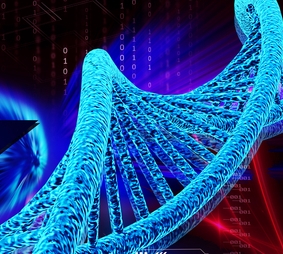
Published on ScienceNordic (http://sciencenordic.com)
Ants in supercolonies defy evolution
Some invasive ants create supercolonies which eliminate other ants in an area. But the supercolonies cannot continue to exist, since evolution doesn’t allow for this social behaviour.
First there was one; then there were two – and before long there were billions of them. Invasive ants have managed to form supercolonies that can grow indefinitely.Ants normally form colonies with only one nest and one queen. But for 15-20 of the world’s 12,643 known ant species, this isn’t enough: they form supercolonies with several nests and several queens. This enables them to spread over large areas and wipe out other ant species.
The International Union for Conservation of Nature (IUCN) has compiled a list of the 100 invasive species that are most harmful to Earth’s biodiversity. This list includes five of the supercolony-forming ants.
“It looks as if the ants defy evolution, and we’re eager to figure out how that’s even possible,” says Jes Søe Pedersen of the Department of Biology at the University of Copenhagen.
“According to the laws of evolution, you only need to help out your relatives. But we’re seeing ant colonies so big that all the ants cannot possibly be related. So why are they helping one another? That’s what we’re trying to figure out,” he says.
One nest and one queen is the norm
Ants usually live in fairly isolated nests, consisting of a single queen which lays eggs that end up as worker ants. At a certain time of the year the queen lays eggs that turn into new queens and males, which subsequently fly off into the world to build new colonies.In the colony it makes good sense for the workers to work for the entire colony and not just for themselves. When the queen lays eggs, the same genetic material that constitutes the worker ants is promoted, so it makes evolutionary sense that they spend their lives slaving for the queen.
“We have no trouble with understanding how evolution has created the classic ant colony,” says Pedersen. “The workers work for their sisters – new queens – and their brothers – males. It gets a bit trickier to understand when the workers work for other ants' sisters and brothers, as is done in supercolonies.”
Supercolony stretches 6,000km
Ants that form supercolonies do not settle for flying off into the world to build new colonies a couple of times a year.Sometimes, when the nests are starting to fill up, one of the queens takes a few workers out for a walk. They walk a relatively short distance away from the nest and form a new nest, which then becomes part of the same colony.
The ants walk back and forth between the various nests, and the workers work for any of the queens in the colony, regardless of whether they’re related or not.
A supercolony can grow at an incredible speed. From a single point, it can grow up to 30 metres in any direction per year. Within the supercolony, the individual nests can be packed as densely as one per square metre.
“Unless there are geographic obstructions in the way, these supercolonies can just continue to grow, as is exemplified by a colony that stretches 6,000km along the Mediterranean. That’s the largest co-operative unit in the animal kingdom,” says Pedersen.
Argentine Ant present on most continents
The ant species that formed this massive supercolony originates from Argentina. It has spread to Europe, the USA, Australia, Japan, New Zealand and Hawaii from a supercolony that came from South America more than 100 years ago, partly via ship cargo.Supercolonies have also spread to other parts of the world.
Although the Argentine Ant poses no risk to humans, it can soon become a nuisance when all of a sudden there is a ten-fold increase in ants in the garden.
Furthermore, the dominance of the ants can cause a ripple effect in the ecosystem as they eliminate other ant species as well as other insects. This could spoil the food base for species further up in the food chain.
Red fire ants cause grief in the US
The Argentine Ant is not the only supercolony-forming ant that causes trouble.In the US the red American fire ant has had an iron grip on the country since the 1930s. This ant is also imported from Argentina, but unlike the Argentine Ant, it’s nasty for us humans.
The American red fire ant, also known as the ‘red imported fire ant’, has a sting equivalent to a bee sting. Since a supercolony can contain billions of these little creatures within a relatively small area, great efforts are being made to fight them.
“Trying to fight the red imported fire ant on a large scale is hopeless,” says the researcher. “It’s costing the US state billions of dollars every year to fight this ant, to compensate for losses of crops and to provide medication for people who have been stung. It’s a huge problem.”
Mutants can spell the end for supercolonies
Jes Søe Pedersen is part of a research group at the Center for Social Evolution. The group is trying to figure out how these supercolonies can persist, even though their existence defies evolution.Lots of things could put a supercolony down. For example, a queen who is a mutant and only lays queen eggs would be able to spread her offspring quickly around in the colony. Since only queens lay eggs, one queen could become several thousand queens in a short period of time.
If this offspring also gives birth to queens only, it would be optimal for ants with this particular gene, which would soon become dominant in the colony. Eventually there would be no workers left to keep the colony going.
Ants can gradually melt down a supercolony
This would lead to a net genetic meltdown, explains Pedersen, since mutations accumulate in the supercolony over time. Even queens that don’t lay worker eggs will be cared for by other queens’ workers.“Up to now the ants have been showing an extreme form of social behavior; we’re interested in seeing whether evolution will set a limit on how social a creature can get,” he says.
[9]
February 2, 2012 - 05:06






